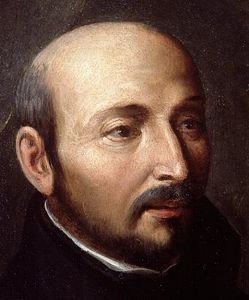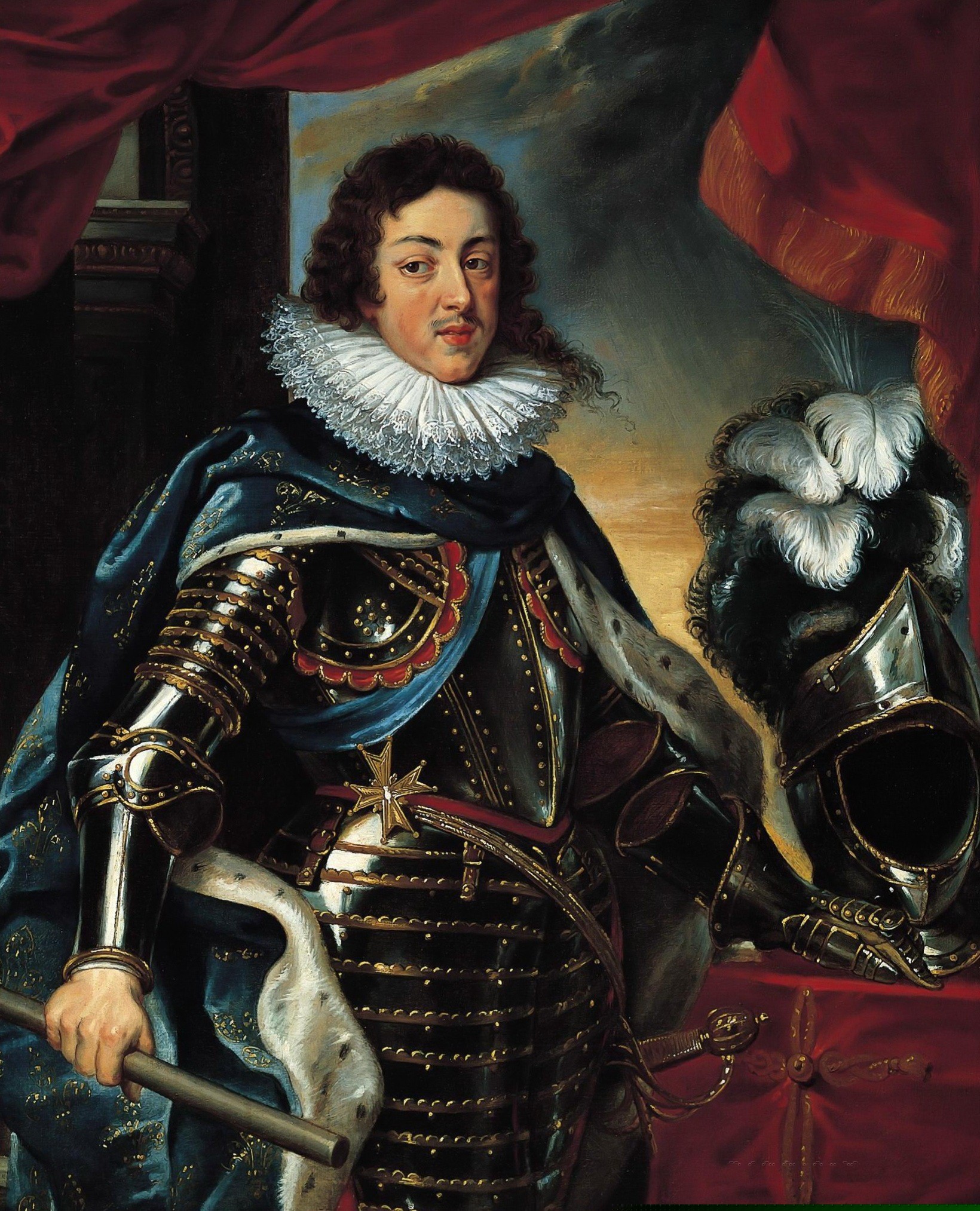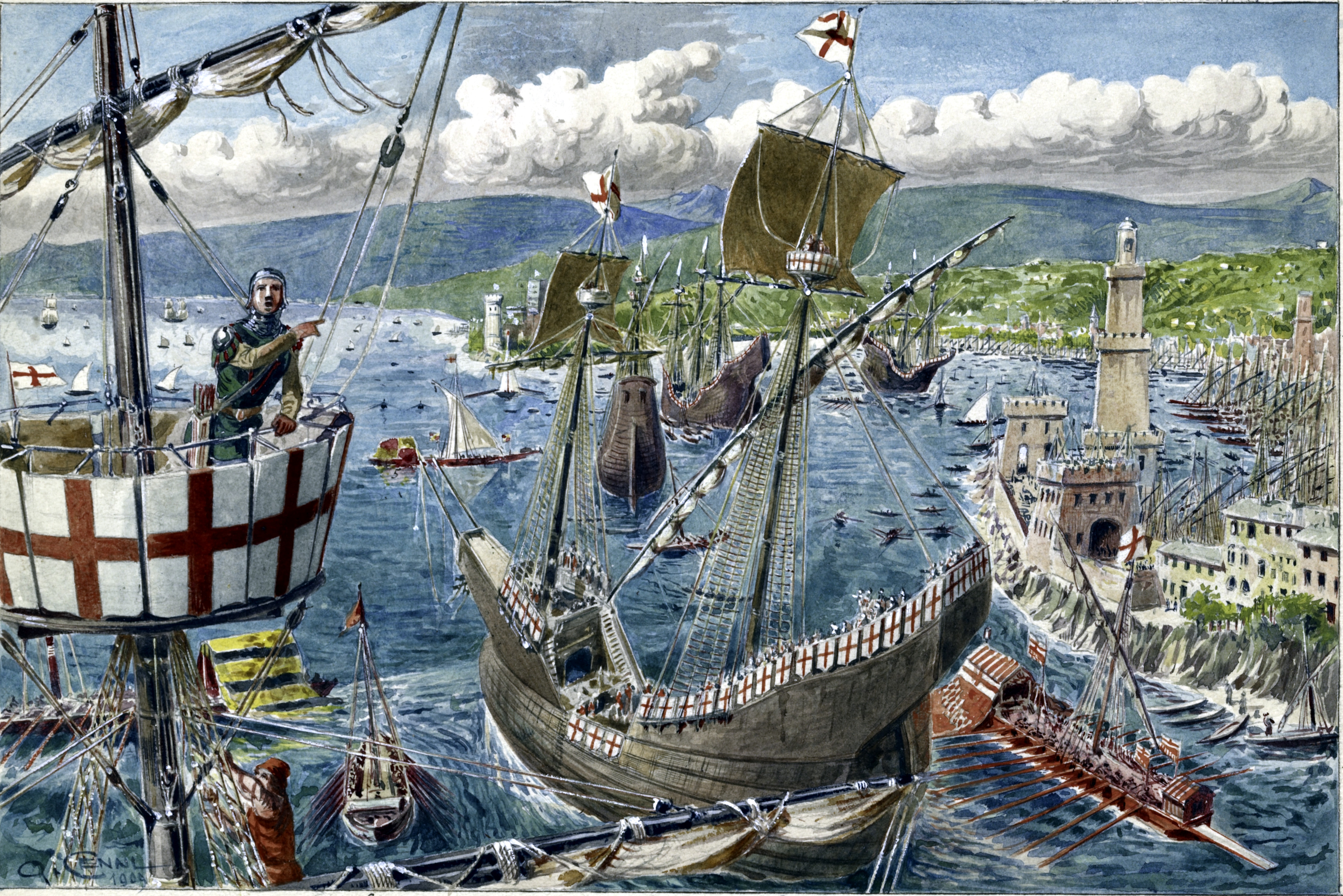|
Jan II Kazimierz
John II Casimir ( pl, Jan II Kazimierz Waza; lt, Jonas Kazimieras Vaza; 22 March 1609 – 16 December 1672) was King of Poland and Grand Duke of Lithuania from 1648 until his abdication in 1668 as well as titular King of Sweden from 1648 until 1660. He was the first son of Sigismund III Vasa with his second wife Constance of Austria. John Casimir succeeded his older half-brother, Władysław IV Vasa. As a prince, John Casimir embarked at Genoa for Spain in 1638 to negotiate a league with Philip IV against France, but was captured by Cardinal Richelieu and imprisoned at Vincennes where he remained for two years. He was released when his brother, Władysław IV, promised never to wage war against France. John Casimir then travelled extensively throughout western Europe and entered the order of Jesuits in Rome in 1643. He was made cardinal by Innocent X, however, after returning to Poland, he became a layman and succeeded his brother in 1648. His reign commence ... [...More Info...] [...Related Items...] OR: [Wikipedia] [Google] [Baidu] |
King Of Poland
Poland was ruled at various times either by dukes and princes (10th to 14th centuries) or by kings (11th to 18th centuries). During the latter period, a tradition of free election of monarchs made it a uniquely electable position in Europe (16th to 18th centuries). The first known Polish ruler is Duke Mieszko I, who adopted Christianity under the authority of Rome in the year 966. He was succeeded by his son, Bolesław I the Brave, who greatly expanded the boundaries of the Polish state and ruled as the first king in 1025. The following centuries gave rise to the mighty Piast dynasty, consisting of both kings such as Mieszko II Lambert, Przemysł II or Władysław I the Elbow-high and dukes like Bolesław III Wrymouth. The dynasty ceased to exist with the death of Casimir III the Great in 1370. In the same year, the Capetian House of Anjou became the ruling house with Louis I as king of both Poland and Hungary. His daughter, Jadwiga, later married Jogaila, the pagan Grand ... [...More Info...] [...Related Items...] OR: [Wikipedia] [Google] [Baidu] |
Marie Louise Gonzaga
Marie Louise Gonzaga ( pl, Ludwika Maria; 18 August 1611 – 10 May 1667) was Queen of Poland and Grand Duchess of Lithuania by marriage to two kings of Poland and grand dukes of Lithuania, brothers Władysław IV and John II Casimir. Together with Bona Sforza (1494–1557), she is regarded as one of the most influential and powerful queen consorts of the Kingdom of Poland and the Polish–Lithuanian Commonwealth. Born in Nevers to Charles I, Duke of Mantua and Catherine of Guise, Marie was brought up at court as the future bride of Duke Gaston of Orléans. In 1645, she married Władysław IV of Poland, with whom she did not have a harmonious relationship. After his death in 1648, the widowed queen married his half-brother and successor, John II Casimir. Marie Louise exuded considerable influence over her second husband and dictated the political course in the country. An ambitious and energetic woman, she was a strong supporter of an absolute monarchy, for which she ... [...More Info...] [...Related Items...] OR: [Wikipedia] [Google] [Baidu] |
Jesuits
The Society of Jesus ( la, Societas Iesu; abbreviation: SJ), also known as the Jesuits (; la, Iesuitæ), is a religious order (Catholic), religious order of clerics regular of pontifical right for men in the Catholic Church headquartered in Rome. It was founded in 1540 by Ignatius of Loyola and six companions, with the approval of Pope Paul III. The society is engaged in evangelization and apostolic ministry in 112 nations. Jesuits work in education, research, and cultural pursuits. Jesuits also give retreats, minister in hospitals and parishes, sponsor direct social and humanitarian ministries, and promote Ecumenism, ecumenical dialogue. The Society of Jesus is consecrated under the patron saint, patronage of Madonna della Strada, a title of the Blessed Virgin Mary, and it is led by a Superior General of the Society of Jesus, Superior General. The headquarters of the society, its Curia, General Curia, is in Rome. The historic curia of Ignatius is now part of the attached to t ... [...More Info...] [...Related Items...] OR: [Wikipedia] [Google] [Baidu] |
Western Europe
Western Europe is the western region of Europe. The region's countries and territories vary depending on context. The concept of "the West" appeared in Europe in juxtaposition to "the East" and originally applied to the ancient Mediterranean world, the Roman Empire ( Western Roman Empire and Eastern Roman Empire), and medieval " Christendom" ( Western Christianity and Eastern Christianity). Beginning with the Renaissance and the Age of Discovery, roughly from the 15th century, the concept of ''Europe'' as "the West" slowly became distinguished from and eventually replaced the dominant use of "Christendom" as the preferred endonym within the region. By the Age of Enlightenment and the Industrial Revolution, the concepts of "Eastern Europe" and "Western Europe" were more regularly used. Historical divisions Classical antiquity and medieval origins Prior to the Roman conquest, a large part of Western Europe had adopted the newly developed La Tène culture. As the Roman ... [...More Info...] [...Related Items...] OR: [Wikipedia] [Google] [Baidu] |
Vincennes
Vincennes (, ) is a commune in the Val-de-Marne department in the eastern suburbs of Paris, France. It is located from the centre of Paris. It is next to but does not include the Château de Vincennes and Bois de Vincennes, which are attached to the city of Paris. History The Marquis de Sade was imprisoned in Vincennes fortress in 1777, where he remained until February 1784 although he escaped for a little over a month in 1778. Thereafter Vincennes fortress was closed and de Sade transferred to the Bastille. In 1821, the noted French poet, Alfred de Vigny, wrote his poem, "La Prison," which details the last days of the Man in the Iron Mask at Vincennes. The ministers of Charles X were imprisoned at the fortress of Vincennes after the July Revolution. A test was conducted in 1849 on Claude-Étienne Minié's invention the Minié ball which would prove successful and years later be adopted by the French army. On the morning of 15 October 1917, famous femme fatale Mata ... [...More Info...] [...Related Items...] OR: [Wikipedia] [Google] [Baidu] |
Cardinal Richelieu
Armand Jean du Plessis, Duke of Richelieu (; 9 September 1585 – 4 December 1642), known as Cardinal Richelieu, was a French clergyman and statesman. He was also known as ''l'Éminence rouge'', or "the Red Eminence", a term derived from the title "Eminence" applied to cardinals and the red robes that they customarily wear. Consecrated a bishop in 1607, Richelieu was appointed Foreign Secretary in 1616. He continued to rise through the hierarchy of both the Catholic Church and the French government by becoming a cardinal in 1622 and chief minister to King Louis XIII of France in 1624. He retained that office until his death in 1642, when he was succeeded by Cardinal Mazarin, whose career he had fostered. He also became engaged in a bitter dispute with the king's mother, Marie de Médicis, who had once been a close ally. Richelieu sought to consolidate royal power and restrained the power of the nobility in order to transform France into a strong centralized state. In f ... [...More Info...] [...Related Items...] OR: [Wikipedia] [Google] [Baidu] |
Philip IV Of Spain
Philip IV ( es, Felipe, pt, Filipe; 8 April 160517 September 1665), also called the Planet King (Spanish: ''Rey Planeta''), was King of Spain from 1621 to his death and (as Philip III) King of Portugal from 1621 to 1640. Philip is remembered for his patronage of the arts, including such artists as Diego Velázquez, and his rule over Spain during the Thirty Years' War. By the time of his death, the Spanish Empire had reached approximately 12.2 million square kilometers (4.7 million square miles) in area but in other aspects was in decline, a process to which Philip contributed with his inability to achieve successful domestic and military reform. Personal life Philip IV was born in the Royal Palace of Valladolid, and was the eldest son of Philip III and his wife, Margaret of Austria. In 1615, at the age of 10, Philip was married to 13-year-old Elisabeth of France. Although the relationship does not appear to have been close, some have suggested that Olivares, ... [...More Info...] [...Related Items...] OR: [Wikipedia] [Google] [Baidu] |
Spain
, image_flag = Bandera de España.svg , image_coat = Escudo de España (mazonado).svg , national_motto = '' Plus ultra'' ( Latin)(English: "Further Beyond") , national_anthem = (English: "Royal March") , image_map = , map_caption = , image_map2 = , capital = Madrid , coordinates = , largest_city = Madrid , languages_type = Official language , languages = Spanish , ethnic_groups = , ethnic_groups_year = , ethnic_groups_ref = , religion = , religion_ref = , religion_year = 2020 , demonym = , government_type = Unitary parliamentary constitutional monarchy , leader_title1 = Monarch , leader_name1 = Felipe VI , leader_title2 = Prime Minister , leader_name2 = Pedro Sánchez , legislature = ... [...More Info...] [...Related Items...] OR: [Wikipedia] [Google] [Baidu] |
Genoa
Genoa ( ; it, Genova ; lij, Zêna ). is the capital of the Regions of Italy, Italian region of Liguria and the List of cities in Italy, sixth-largest city in Italy. In 2015, 594,733 people lived within the city's administrative limits. As of the 2011 Italian census, the Province of Genoa, which in 2015 became the Metropolitan City of Genoa, had 855,834 resident persons. Over 1.5 million people live in the wider metropolitan area stretching along the Italian Riviera. On the Gulf of Genoa in the Ligurian Sea, Genoa has historically been one of the most important ports on the Mediterranean Sea, Mediterranean: it is currently the busiest in Italy and in the Mediterranean Sea and twelfth-busiest in the European Union. Genoa was the capital of Republic of Genoa, one of the most powerful maritime republics for over seven centuries, from the 11th century to 1797. Particularly from the 12th century to the 15th century, the city played a leading role in the commercial trade in Euro ... [...More Info...] [...Related Items...] OR: [Wikipedia] [Google] [Baidu] |
UNESCO
The United Nations Educational, Scientific and Cultural Organization is a specialized agency of the United Nations (UN) aimed at promoting world peace and security through international cooperation in education, arts, sciences and culture. It has 193 member states and 12 associate members, as well as partners in the non-governmental, intergovernmental and private sector. Headquartered at the World Heritage Centre in Paris, France, UNESCO has 53 regional field offices and 199 national commissions that facilitate its global mandate. UNESCO was founded in 1945 as the successor to the League of Nations's International Committee on Intellectual Cooperation.English summary). Its constitution establishes the agency's goals, governing structure, and operating framework. UNESCO's founding mission, which was shaped by the Second World War, is to advance peace, sustainable development and human rights by facilitating collaboration and dialogue among nations. It pursues this objec ... [...More Info...] [...Related Items...] OR: [Wikipedia] [Google] [Baidu] |
King Of Sweden
The monarchy of Sweden is the monarchical head of state of Sweden,See the #IOG, Instrument of Government, Chapter 1, Article 5. which is a constitutional monarchy, constitutional and hereditary monarchy with a parliamentary system.Parliamentary system: see the #IOG, Instrument of Government, Chapter 1, Article 1. There have been kings in what now is the Sweden, Kingdom of Sweden for more than a millennium. Originally an elective monarchy, it became a hereditary monarchy in the 16th century during the reign of Gustav Vasa, though virtually all monarchs before that belonged to a limited and small number of families which are considered to be the royal dynasties of Sweden. Sweden in the present day is a representative democracy in a parliamentary system based on popular sovereignty, as defined in the current Basic Laws of Sweden#Instrument of Government, Instrument of Government (one of the four Basic Laws of Sweden, Fundamental Laws of the Realm which makes up the written constitu ... [...More Info...] [...Related Items...] OR: [Wikipedia] [Google] [Baidu] |
Abdication
Abdication is the act of formally relinquishing monarchical authority. Abdications have played various roles in the succession procedures of monarchies. While some cultures have viewed abdication as an extreme abandonment of duty, in other societies (such as pre- Meiji Restoration Japan), abdication was a regular event and helped maintain stability during political succession. Historically, abdications have occurred both by force (where the regnant was forced to abdicate on pain of death or other severe consequences) and voluntarily. Some rulers are deemed to have abdicated ''in absentia'', vacating the physical throne and thus their position of power, although these judgements were generally pronounced by successors with vested interests in seeing the throne abdicated, and often without or despite the direct input of the abdicating monarch. Recently, due to the largely ceremonial nature of the regnant in many constitutional monarchies, many monarchs have abdicated due to ol ... [...More Info...] [...Related Items...] OR: [Wikipedia] [Google] [Baidu] |









